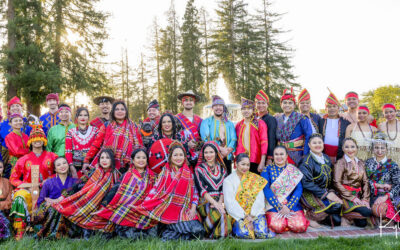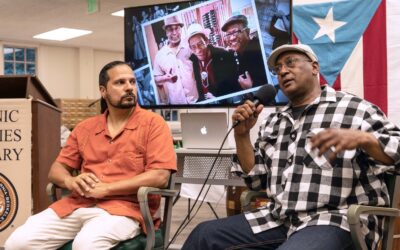Bharatanatyam is a classical Indian dance form originating in the South Indian temple dance tradition, which combines the arts of the stage, music, poetry, costuming, and rhythm. Bharatanatyam is characterized by graceful movements, intricate footwork, sculpturesque poses, and deep dramatic elements which require years of rigorous training to perfect. An…
The mrudangam is a double-headed drum. It is said to be the “king of percussion” and dates back to 4 or 5 century BCE, with references found in the great Indian epics Ramayana, Mahabharata, and Srimad Bhagavatham. Today it is featured in all South Indian classical music (Carnatic) concerts as…
As a grantee of ACTA’s Living Cultures Grants Program in 2015, DelinaDreamProductions will receive support for the documentary Bare Soles Bare Soul. Bare Soles Bare Soul will explore the sociocultural experience of eight African American women who have studied and practiced various traditional African dance styles…
Pangalay dancer and culture bearer
The descendants of the Yoruba people of Nigeria continue to preserve their connection to their ancestral traditions and art forms through ritual song, dance, and drumming. The nuances of these traditional elements are available only to those initiated, allowing for a robust spiritual knowledge and deeper understanding of the religious…
Odissi is the oldest of the eight classical dance forms of India, dating back to the 1st century BCE. A devotional dance typically performed by temple dancers in the east Indian state of Odisha, Odissi was suppressed under British rule (the colonial rulers considered it immoral). It was revived in…
While there are many styles of Balkan Romani (“Gypsy”) women’s dance, perhaps the most popular, uniquely Romani dance is the kyuchek. Of Turkish origin, kyuchek can be danced either as a communal line dance with synchronized steps or as a solo improvisation. Line dances tend to have more contained repetitive…
Carnatic music is an ancient tradition of South Indian classical music that dates back for centuries. It is a complex system of music that requires both artistic and technical improvisation. The use of the violin for Carnatic music, both as an accompanying and solo instrument, was introduced in the 1700’s. …
Oaxacan arts and culture
Puerto Rican Bomba




